Contents
Kumquat is a beautiful plant with beneficial golden-colored fruits. Kumquat belongs to the subgenus Fortunella, Rutov family. An ornamental plant was brought into the country from China relatively recently and immediately became popular. Kumquat in a flower pot looks attractive, reminiscent of a miniature tree or shrub. Growing kumquat at home is an interesting and easy task, even a novice florist can handle it. By following simple rules, you can grow a tropical plant with fragrant flowers and useful, beautiful fruits.
What varieties of kumquat can be grown at home
Under natural conditions, kumquat grows in southern China, the height of the tree reaches 5 m. At home, the height of the plant depends on the size of the pot. The plant forms a strong root system and a spherical crown. Kumquat blooms in the first half of summer, numerous snow-white-pink flowers with a pleasant citrus aroma appear on the tree.
After flowering on a domestic kumquat plant, orange-colored fruits appear, weighing up to 30 g. They taste like tangerines, but there is one difference – kumquats are eaten with a peel, as it is soft and has a sweet taste.
At home, in flower pots, you can grow several unpretentious, miniature varieties of kumquats.
Nagami. A popular, common variety of kumquat, which can be grown both in apartment conditions and in the backyard. An ornamental tree produces sweet-sour fruits, the size of an olive. The variety has 2 subspecies:
- Variegatum – the green peel is painted in original horizontal stripes, which disappear during the ripening process.
- Nordmann is a seedless variety of the kumquat.
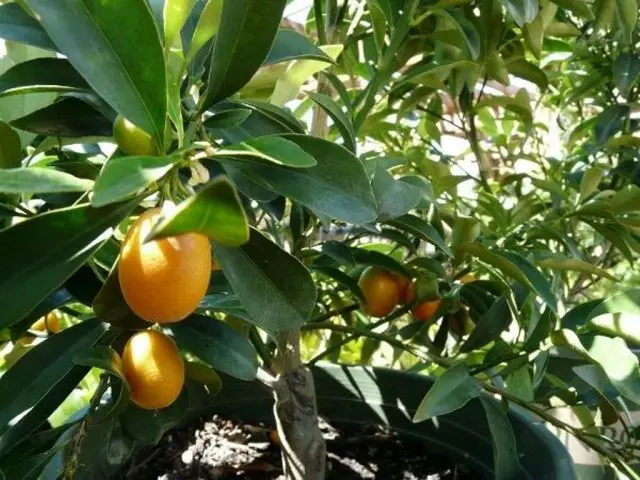
Marumi. Low-growing kumquat variety, forms a miniature tree-like shrub, with thorny shoots. Small, oval fruits are golden in color, have a sweet and sour taste and a pleasant smell. The variety is frost-resistant, therefore, in regions with a warm climate, it can be grown as a street plant.
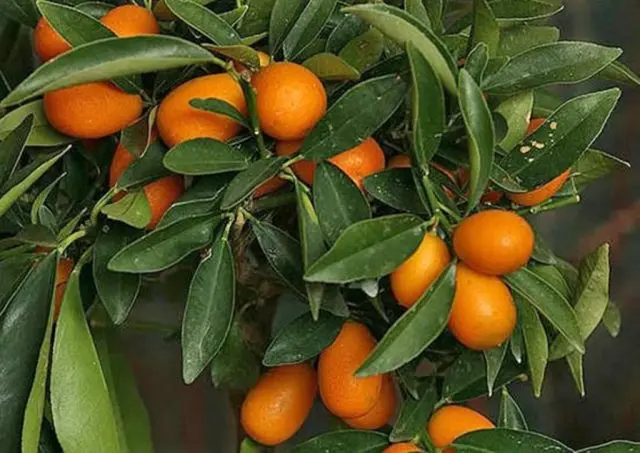
Maeve. A dwarf variety of kumquat, the height of the tree reaches half a meter. Due to its decorative appearance, rather large bright yellow fruits with a sour taste, the variety has become popular with flower growers.

Fukushi. The variety is suitable for flower growers who have experience in growing kumquats in an apartment. The plant forms a dense dark green crown, among which large, sweet fruits with a thin peel appear in the middle of summer. The Fukushi variety is ideal for growing in greenhouses and winter gardens.

The oboe. Dwarf, thornless kumquat variety, with a delicate emerald crown. Flowers appear on annual shoots from June to October. Snow-white inflorescences reach 2 cm in diameter, very beautiful and fragrant. The fruits are small with a thin skin and sweet and sour, spicy pulp.
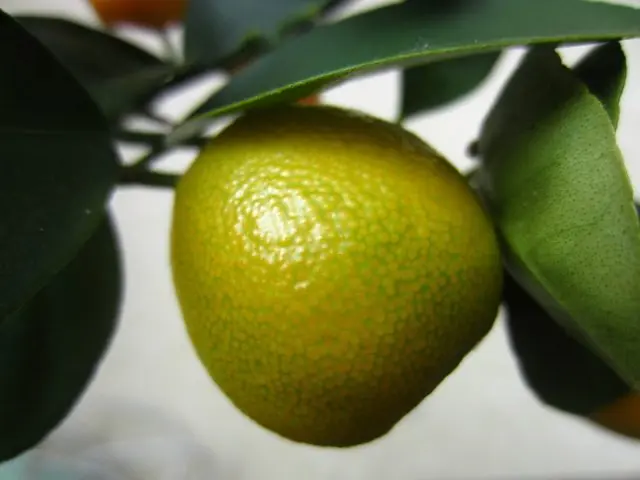
What conditions do plants need to create
To grow a kumquat at home, you need to create comfortable conditions for growth, development and fruiting. In summer, kumquat prefers to grow in diffused light, in a place protected from drafts. If the weather is warm, then the flower pot can be moved to a balcony or garden plot.
In winter, kumquats need a lot of light, so they choose a warm, sunny place for this. If the windows face the west or north side, the flower must be illuminated.
Kumquats thrive in high humidity conditions. If the air is dry, as a rule, it comes in winter, when the heating is turned on, the kumquat begins to shed its leaves. To increase the humidity of the air, it is necessary to spray the plant once a week, install a container of water or an air humidifier next to the flower pot. If the temperature is cold in the apartment, then kumquat is not sprayed, since at high humidity and low air temperature, fungal diseases often appear on the plant.
How to grow kumquat at home
Kumquats are grown from:
- seeds;
- cuttings;
- bends;
- vaccination.
When propagating kumquat by seeds, it will take a long time to expect fruiting, and when eating fruits, the taste will be below average.
Reproduction by grafting and branching is a difficult and time-consuming process, therefore it is not suitable for beginner flower growers.
Layers
For propagation of kumquat, a one-year-old, strong shoot, 20 cm long, is chosen with taps. 2 annular cuts are made on the trunk and the bark layer is carefully removed, exposing a round area. Leaves above and below the cut are removed.
For rooting you will need a plastic bottle. The container is cut in the center, a hole is made at the bottom equal to the diameter of the shoot. The shoot is placed inside, the container is filled with nutrient soil and both parts are fastened with tape.
After 60 days, the shoot will grow the root system, and after separation from the mother bush, it will be ready for transplanting to a permanent place.
Seeds
Seed propagation is an easy, popular way to propagate kumquats. Even an inexperienced grower can grow a plant from a seed. The main thing is to know that a young kumquat grown in this way will develop for a long time, and the first harvest can be obtained only after 10 years.

How to make a kumquat stalk grow roots
Kumquat can be propagated by cuttings all year round, but mid-April, before flowering, is considered the best time. In order for the cutting to form a root system faster, it is treated in a growth stimulator (Kornevin or Epin) before planting.
How to plant a kumquat at home
Grafting is a complex, time-consuming method of propagating kumquats, therefore it is only suitable for experienced flower growers. As a rootstock, grapefruit, lemon, orange, trifoliate or poncyrus are suitable.
You can graft a kumquat by budding or with a butt shield, during active growth. For reproduction, a healthy seedling with a diameter of about 2 cm is chosen. After 50 days, the seedling will get stronger and grow the root system. To make the tree look decorative, formative pruning is carried out, removing all shoots above the grafting site.
In a kumquat grown in this way, fruiting occurs after 10 years, but growth and development is much faster. The grafted kumquat has a strong immunity to many diseases and sudden changes in temperature and humidity.
Rules of landing
Growth, development and fruiting time depend on the correct planting of kumquat. By choosing the right breeding method and having a little patience, you can grow a kumquat indoors.
Growing kumquat at home from the bone
Growing kumquat from seeds at home is not difficult if you follow certain rules. This is a long process that requires patience and endurance from the grower.
- A 15 cm layer of drainage is poured into a flower pot and covered with nutritious, well-drained soil.
- The seeds are soaked in a growth stimulator for several hours for better germination.
- Prepared seeds are buried in moist soil by 1,5-2 cm.
- For rapid germination, the pot is covered with polyethylene, creating a greenhouse effect.
- Shoots appear after 10 days.
- After the appearance of 4 leaves, the plant is transplanted into a larger pot. To quickly build up the root system, the roots are shortened by 0,5 cm.
How to plant a kumquat stalk at home
Kumquat cuttings are a simple, effective method of propagation. Suitable for rooting are 10 cm flexible, green shoots cut from fruit-bearing plants.
The lower cut, made at an acute angle, is treated in a growth stimulator and sprinkled with ash. The bottom of the flower pot is covered with expanded clay, covered with wet moss and nutrient soil is added. Several cuttings are placed in a pot to a depth of 2 cm, covered with a glass cap and cleaned in a warm, sunny place. After a month, rooting occurs, and the cuttings can be planted in separate containers.
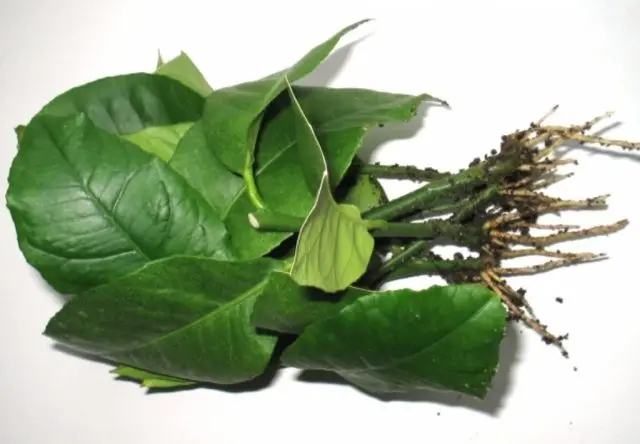
How to care for kumquat at home
Citrus kumquat is a demanding plant, so home care should be timely and carried out according to certain rules. For rapid growth and development, as well as for beautiful flowering and good fruiting, it is necessary to timely water, fertilize and form pruning.
Watering Schedule
The frequency of watering kumquat depends on the time of year. In autumn and spring, irrigation is carried out moderately, in winter watering is reduced, in summer – as the soil dries out. Watering is carried out in the morning with warm, settled water. When irrigated with cold water, the plant will shed its leaves and root rot may develop.
The need for watering can be determined by the soil. If it dries to a depth of 4-5 cm, then it’s time for watering. After half an hour, the excess water formed in the pan is removed.
How to feed a kumquat
Without regular feeding, the kumquat will grow well and will not bear fruit. Feeding depends on several factors:
- pot size;
- soil quality;
- plant age.
From March to October, during active growth and fruiting, fertilizers are applied several times a month. To do this, use liquid top dressing intended for citrus plants, diluted strictly according to the instructions. You can also use 2,5 g of ammonium nitrate, 1,5 g of potassium salt and superphosphate, diluted in 1000 ml of warm water.
How to cut a kumquat at home
In order for the kumquat to have a decorative appearance and begin early fruiting, it is necessary to trim the crown. First of all, the trunk is formed. To do this, it is cut at a height of 20 cm, leaving 4 or more well-developed buds. Further, stem branches will begin to form from these buds, which will become the basis of the tree and will be branches of the first order. Each next order should be shorter than the previous one by 5 cm.
When does the kumquat bear fruit?
To increase and speed up fruiting, you need to know the simple subtleties of how to make a kumquat bloom:
- Growing method – for early fruiting, kumquats are grown from cuttings. In this case, the first fruits will appear 5 years after planting.
- Regulate flowering and the formation of ovaries – a large number of inflorescences takes a lot of energy from the kumquat, which prevents the formation of full-fledged ovaries. The maximum number of fruits is 1 per 10-15 sheets.
- Care – regularly fertilize with complex mineral fertilizers.
Kumquat is a late-ripening citrus fruit. Flowers appear in July, then after 14 days there is a second abundant flowering. Orange fruits ripen in late winter, early spring.
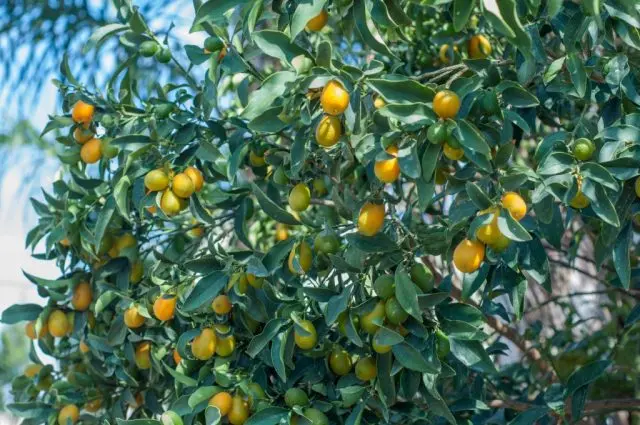
Kumquat transplant at home
The frequency of transplantation depends on the age of the kumquat. One-year-old specimens are transplanted 2 times a year, a plant at the age of 3 years – 1 time, an adult kumquat is transplanted no more than 1 time in 3 years. You can determine the time by the roots formed from the drainage holes. The optimal time for transplanting is the dormant period, after harvesting.
Transplant technique:
- Like any citrus plant, the kumquat prefers nutritious soil. You can buy it, or you can mix it yourself. To do this, combine sand, peat, humus and garden soil. For an adult plant, the ratio is 1:1:1:1, for a young kumquat, the amount of sand is increased by 2 times.
- Before planting a kumquat in self-prepared soil, it must be disinfected by chemical or thermal means.
- The pot is selected 2 cm more than the volume of the previous one.
- The bottom is covered with expanded clay and the plant is transferred to a new pot by transshipment. The voids are filled with nutrient soil, lightly tamping it.
- Experienced flower growers recommend mulching the top layer with peat or disinfected tree bark to preserve moisture.
- It is impossible to deeply deepen the kumquat, as the citrus will start to hurt and may die.
Control of diseases and pests
Kumquat is a capricious plant that develops well at high temperature and humidity. If the rules of care are not followed, the kumquat, like any citrus fruit, can be susceptible to diseases and attacked by pests.
How to deal with pests on a kumquat tree
The main pests of kumquat include:
- aphid – affects the leaf plate and young shoots;
- thrips – destroy the entire green part of the kumquat;
- spider mite – affects young foliage and root system;
- scale insect – settles on the trunk, branches and fruits of kumquat;
- nematodes – affect the root system.
You can fight insects with folk remedies together with insecticides. As folk remedies, a decoction of hot pepper, a tobacco-alkaline mixture, an ash alkaline solution are used.
How to treat kumquat from diseases
All insect pests are carriers of dangerous diseases, such as:
- Antraknoz – the fungus affects leaves, fruits and branches. Leaves and flowers fall, red spots appear on the kumquat fruits.
- Gommoz – red spots appear on the trunk of the tree. If you do not start treatment, the bark will begin to die, and gum will flow from the affected area. The disease often appears with deep planting, in the presence of mechanical damage and poor drainage.
- citrus warty – the disease affects the fruits, leaves and young shoots of kumquat. The foliage is covered with small yellow spots, which eventually turn into wart growths, the young kumquat branches dry, blurry orange spots form on the fruits.
You can get rid of kumquat diseases with the help of fungicides. For prevention, 3 times a year, kumquat is sprayed with 1% Bordeaux liquid.

Possible problems in growing
When growing kumquats, some problems can arise. Very often, the leaves of the plant dry, the ovaries fall, flowering and fruiting do not occur.
Why kumquat sheds leaves and what to do
In kumquat, leaf fall occurs with a lack of moisture, low air humidity, and if the plant is not given a dormant period with a decrease in air temperature. In order for the kumquat to go into hibernation, the pot is moved to a bright, cool place, and watering is reduced.
Also, leaf fall can begin immediately after purchase. This is due to a change in the conditions of detention. To stop the fall of foliage, the kumquat is transplanted into a new substrate, all ovaries and fruits are removed, the earth is shed with warm water with the addition of a growth biostimulator. You can also cover the crown for 10-14 days with a plastic bag.
Why kumquat dries at home
Very often, the tips of the leaves begin to dry out at the kumquat. There are several reasons for this problem:
- watering with cold, chlorinated water;
- low air humidity;
- lack of moisture.
You can get rid of the problem by adjusting the care of the kumquat: carry out timely watering, increase the humidity of the air by spraying or a warm shower. Irrigation is carried out only with separated, warm water.
Why does the kumquat not bloom?
Very often kumquat throws off buds. This is a natural phenomenon, the plant thus gets rid of unnecessary ovaries, leaving strong and viable.
Also, flowering does not occur if the rules of care are not followed: irregular watering, the pot is placed in a poorly lit place, not timely application of complex mineral fertilizers. In order for the kumquat to please with a beautiful, fragrant flowering, and then with good fruiting, it is fed with phosphorus-potassium supplements throughout the growing season.
Conclusion
Growing kumquat at home is an interesting activity and requires knowledge of certain skills from the grower. To grow a beautiful and healthy plant, it is necessary to carry out timely care and prevention of diseases. And then the plant will thank with abundant, fragrant flowering and good fruiting.









